I have a 5 ns pulse width High coming out of a comparator that is asynchronous. I am attempting to count this pulse. My current microcontroller (dsPIC33FJ) has an asynchronous counter on board, with a min spec of at least 10 ns pulse width High.
What are my options to lengthen/elongate this 5 ns pulse so it can be read by the counter? I am open to switching to a different microcontroller or using a more qualified front end counter, but I would prefer to use passive/simple circuitry instead. Is this possible?
What I have researched so far:
I have tried tying a .1uF capacitor to between the output signal and ground in hopes that the discharge would slow it down, but all that did was heavily distort the signal. May I use a way lower value?
I researched sample and hold IC's, but the shortest acquisition time I could find is around 200 ns which is not suitable for my application.

